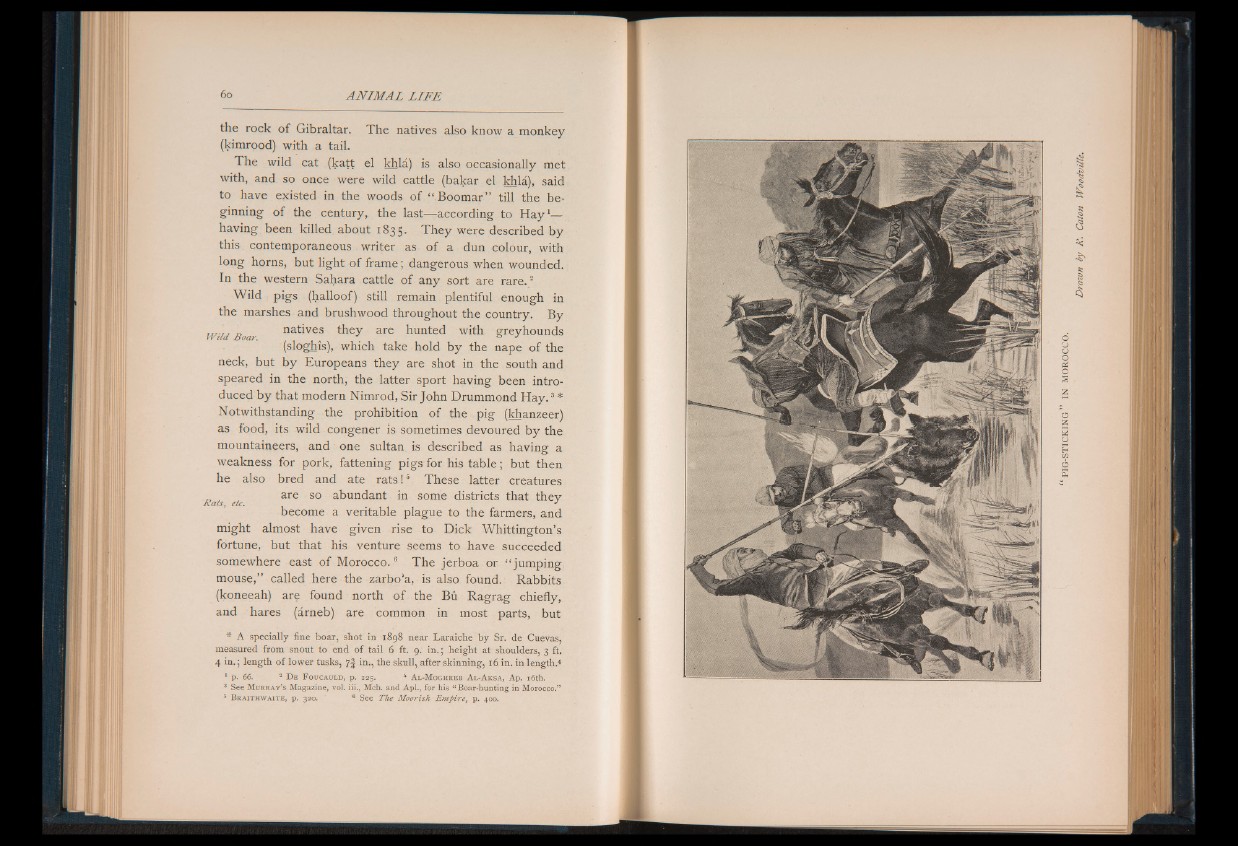
the rock of Gibraltar. The natives also know a monkey
(kimrood) with a tail.
The wild cat (katt el khla) is also occasionally met
with, and so once were wild cattle (bakar el khla), said
to have existed in the woods of “ Boomar” till the beginning
of the century, the last— according to H a y 1—
having been killed about 1835. They were described by
this contemporaneous writer as o f a dun colour, with
long horns, but light of frame; dangerous when wounded.
In the western Sahara cattle of any sort are rare.2
Wild pigs (halloof) still remain plentiful enough in
the marshes and brushwood throughout the country. By
Wild Boar natives they are hunted with greyhounds
(sloghis), which take hold by the nape of the
neck, but by Europeans they are shot in the south and
speared in the north, the latter sport having been introduced
by that modern Nimrod, Sir John Drummond H ay .3 *
Notwithstanding the prohibition o f the pig (khanzeer)
as food, its wild congener is sometimes devoured by the
mountaineers, and one sultan is described as having a
weakness for pork, fattening pigs for his tab le ; but then
he also bred and ate rats l 5 These latter creatures
are so abundant in some districts that they
R a is , etc. J
become a veritable plague to the farmers, and
might almost have given rise to Dick Whittington’s
fortune, but that his. venture seems to have succeeded
somewhere east of Morocco.6 The jerboa or “ jumping
mouse,” called here the zarbo’a, is also found. Rabbits
(koneeah) are found north o f the Bu Ragrag chiefly,
and hares (arneb) are common in most parts, but
* A specially fine boar, shot in 1898 near Laraiche by Sr. de Cuevas,
measured from snout to end of tail 6 ft. 9. in.; height at shoulders, 3 ft.
4 in.; length of lower tusks, 7J in., the skull, after skinning, 16 in. in length.4
1 p . 66. 2 D e F o u c a u ld , p . 12 5 . 4 A l -M o g h r e b A l - A k s a , Ap. 16 th.
3 See M u r r a y ’s Magazine, vol. iii., Mch. and Apl., for his “ Boar-hunting in Morocco.”
0 B r a i t h w a i t e , p . 320. 6 See The Moorish Empire, p. 400.